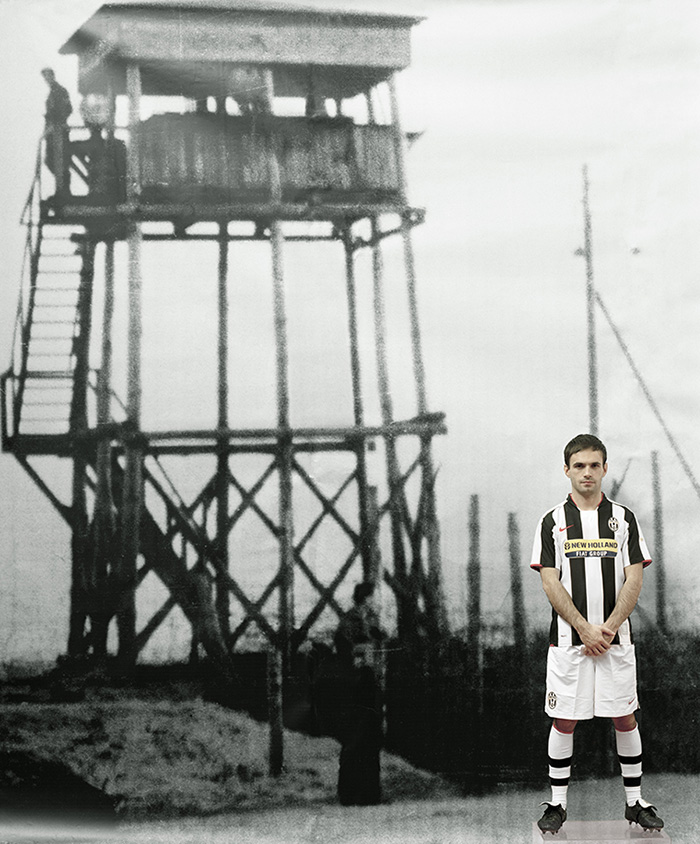
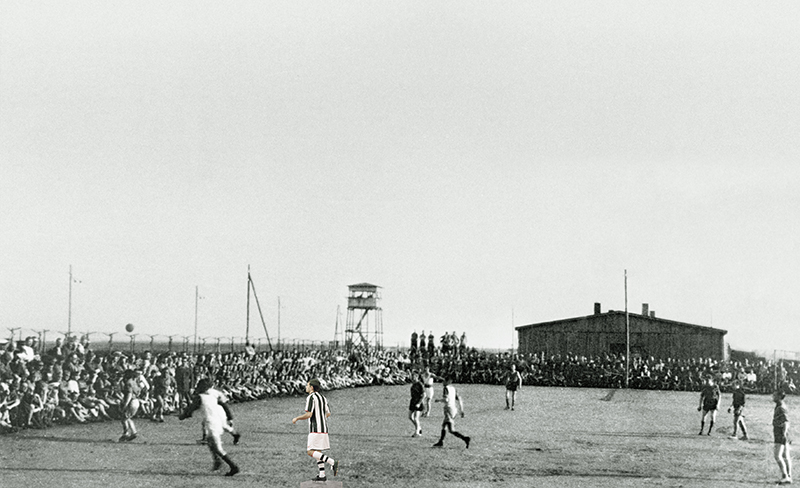
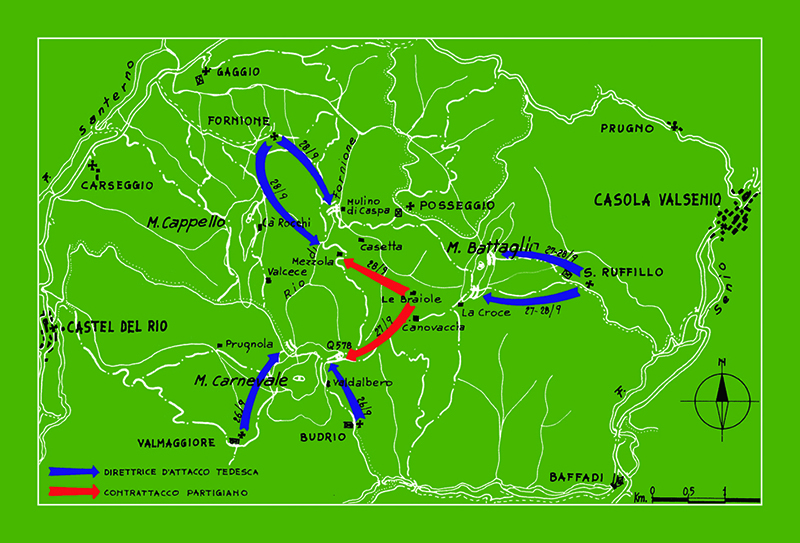
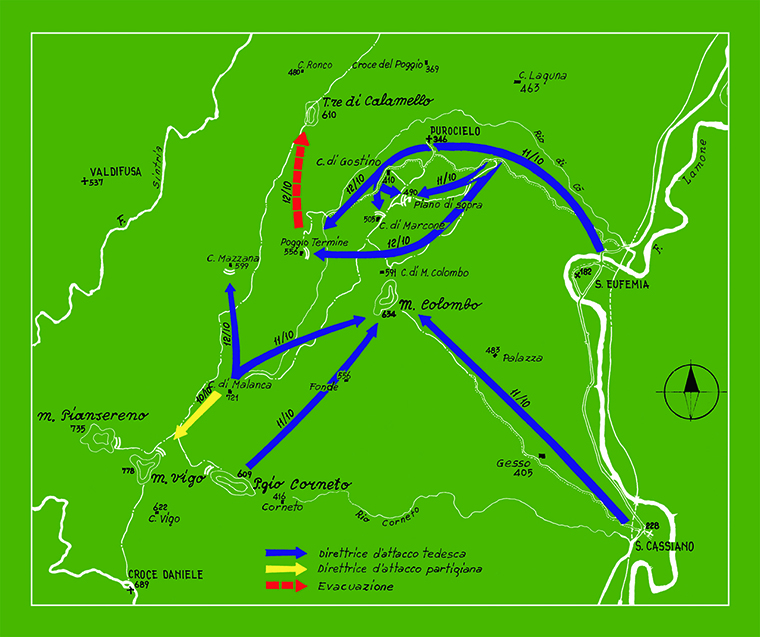
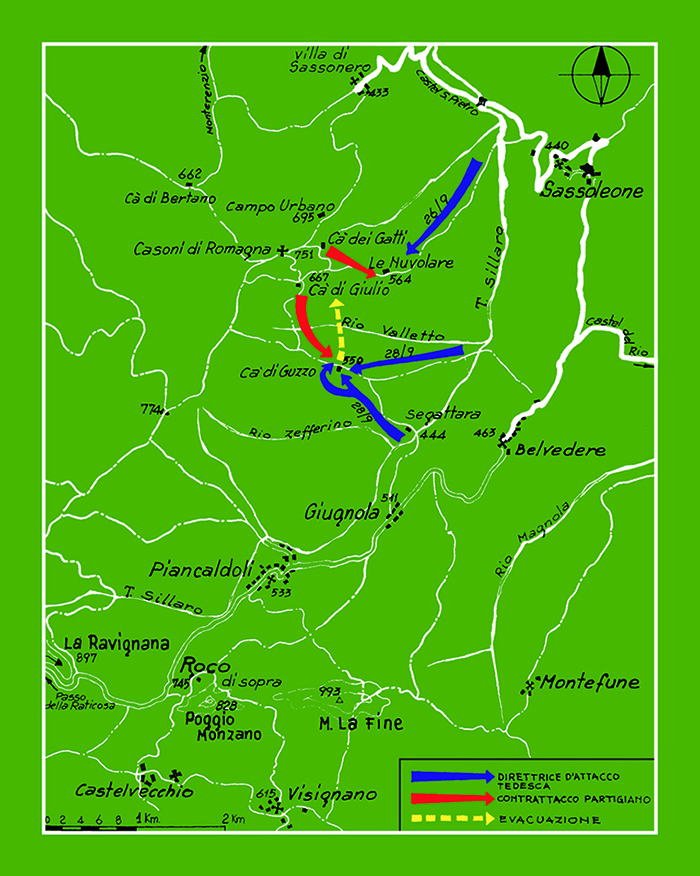
GAP is an exhibition which deals with the complex, and decisively difficult relationship that we live with, between memories and the present and more in general between the past and the present.This is done through the photography and the story of Lieutenant VittorioVialli, a young infantry geologist, sent after Sept 8th in 1943 in a prisoner of war camp in the north of Germany. But Vialli was not just a geologist but he was also a passionate photographer, who was able to hide his camera and a few rolls of film for the duration of his imprisonment, with which he documented his life in the camp. CristianChioroni, who often does research in photographic archives, searching for substance in his work, he discovered the existence of these photographs in the archive of the Parri Institute of Bologna and from this point he began to realize the significance behind the photographs. Astonished by the choice of the Italian Army, which after the armistice preferred German Prisons to the republic of Salo’ and the passive resistance in which they are protagonists that was rarely spoken about. VittorioVialli caught images of daily life in the camp, the harsh conditions and small moments of joy, such as the football match which the prisoners organized became momentous for everyone involved. The game of football became an element with which Chironi attempted to bridge the gap between synchronizing this past with his present. He chose some of the photos of VittorioVialli he inserted himself in the photograph, dressed in a black and white football strip the same as the commonly worn prison uniform. Also three photographs in which he transforms battle plans by overlaying them with a schematic of football tactics. To conclude he made a video with the title GAP 7, with some of the faded photos taken by ally reconnaissance during the war accompanied with the rhythm of the UEFA Champions League anthem. A sound-score with epic and rhetorical tunes, that have a greater importance to the heroes of our times. Of course this is a bitter irony, but it is also the precise idea that the past can only be understood if the present is clear thus rendering the past with the present. (extracted from the text of Raffale Gavarro)
Gap è una mostra che lavora sul complesso, e decisamente difficile, rapporto che viviamo oggi tra memoria e presente, e più in generale tra passato e presente. Lo fa attraverso le fotografie e la storia del tenente Vittorio Vialli, giovane geologo della fanteria, mandato dopo l’8 settembre del 1943 in un campo di prigionia nel nord della Germania. Ma Vialli era, oltre che geologo, un appassionato fotografo, che riuscì a nascondere per tutta la prigionia una macchina fotografica e un discreto numero di rullini con cui documentò la vita del campo. Cristian Chironi, che abitualmente fa ricerche negli archivi fotografici, quasi a cercare una sorta di nutrimento al proprio lavoro, scopre l’esistenza di queste immagini nell’archivio dell’Istituto Parri di Bologna, e da qui comincia a immaginare un percorso al loro interno. È colpito dalla scelta di quei militari italiani che dopo l’armistizio hanno preferito la prigionia tedesca alla Repubblica di Salò, dalla resistenza passiva di cui sono protagonisti e di cui si è sempre poco parlato. Vialli ruba immagini di vita quotidiana nel campo, momenti difficili e piccoli attimi di gioia, come le partite di calcio che i prigionieri organizzano in un vero e proprio torneo. Proprio il calcio diventa l’elemento con cui Chironi cerca di ricucire quel gap temporale, tentando di rendere quel passato sincrono al suo presente. Sceglie delle foto di Vittorio Vialli in cui si inserisce al loro interno vestito da calciatore, con divisa a strisce bianconere, analoga a quella classica dei prigionieri. Tre foto, a cui affianca altrettanti schemi di azioni di battaglie tra partigiani e tedeschi, trasformandoli in schemi tattici di una partita. Costruisce infine un video, intitolato Gap#7, con alcune foto scattate dai ricognitori alleati durante la guerra, montate in dissolvenza e sapientemente in accordo con il ritmo dell’inno Uefa della Champions League. Una colonna sonora dai toni epici e retorici, che vuole esaltare il ruolo degli eroi dei nostri tempi. Ironia amara, certo, ma anche l’idea precisa che il passato si può capire solo avendo chiaro il presente, rendendoli l’uno parte dell’altro. (estratto da testo di R. Gavarro)